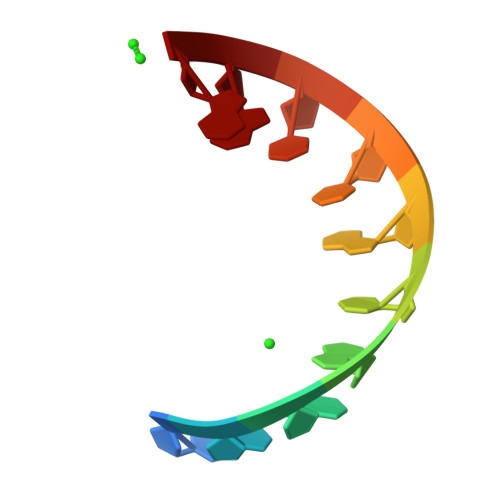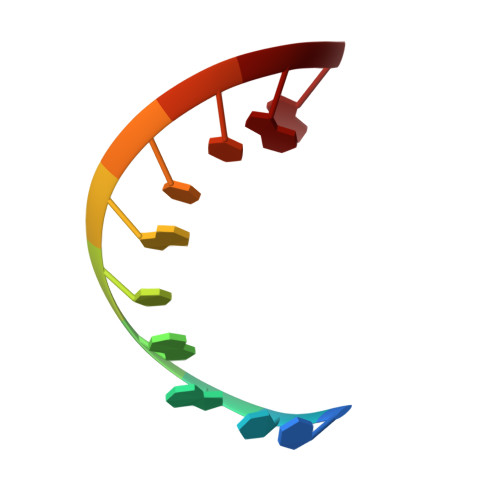Structural insights into the effects of 2'-5' linkages on the RNA duplex.
Sheng, J., Li, L., Engelhart, A.E., Gan, J., Wang, J., Szostak, J.W.(2014) Proc Natl Acad Sci U S A 111: 3050-3055
- PubMed: 24516151
- DOI: https://doi.org/10.1073/pnas.1317799111
- Primary Citation of Related Structures:
4MS9, 4MSB, 4MSR - PubMed Abstract:
The mixture of 2'-5' and 3'-5' linkages generated during the nonenzymatic replication of RNA has long been regarded as a central problem for the origin of the RNA world. However, we recently observed that both a ribozyme and an RNA aptamer retain considerable functionality in the presence of prebiotically plausible levels of linkage heterogeneity. To better understand the RNA structure and function in the presence of backbone linkage heterogeneity, we obtained high-resolution X-ray crystal structures of a native 10-mer RNA duplex (1.32 Å) and two variants: one containing one 2'-5' linkage per strand (1.55 Å) and one containing three such linkages per strand (1.20 Å). We found that RNA duplexes adjust their local structures to accommodate the perturbation caused by 2'-5' linkages, with the flanking nucleotides buffering the disruptive effects of the isomeric linkage and resulting in a minimally altered global structure. Although most 2'-linked sugars were in the expected 2'-endo conformation, some were partially or fully in the 3'-endo conformation, suggesting that the energy difference between these conformations was relatively small. Our structural and molecular dynamic studies also provide insight into the diminished thermal and chemical stability of the duplex state associated with the presence of 2'-5' linkages. Our results contribute to the view that a low level of 2'-5' substitution would not have been fatal in an early RNA world and may in contrast have been helpful for both the emergence of nonenzymatic RNA replication and the early evolution of functional RNAs.
Organizational Affiliation:
Howard Hughes Medical Institute and Center for Computational and Integrative Biology, and Department of Molecular Biology, Simches Research Center, Massachusetts General Hospital, Boston, MA 02114.



















